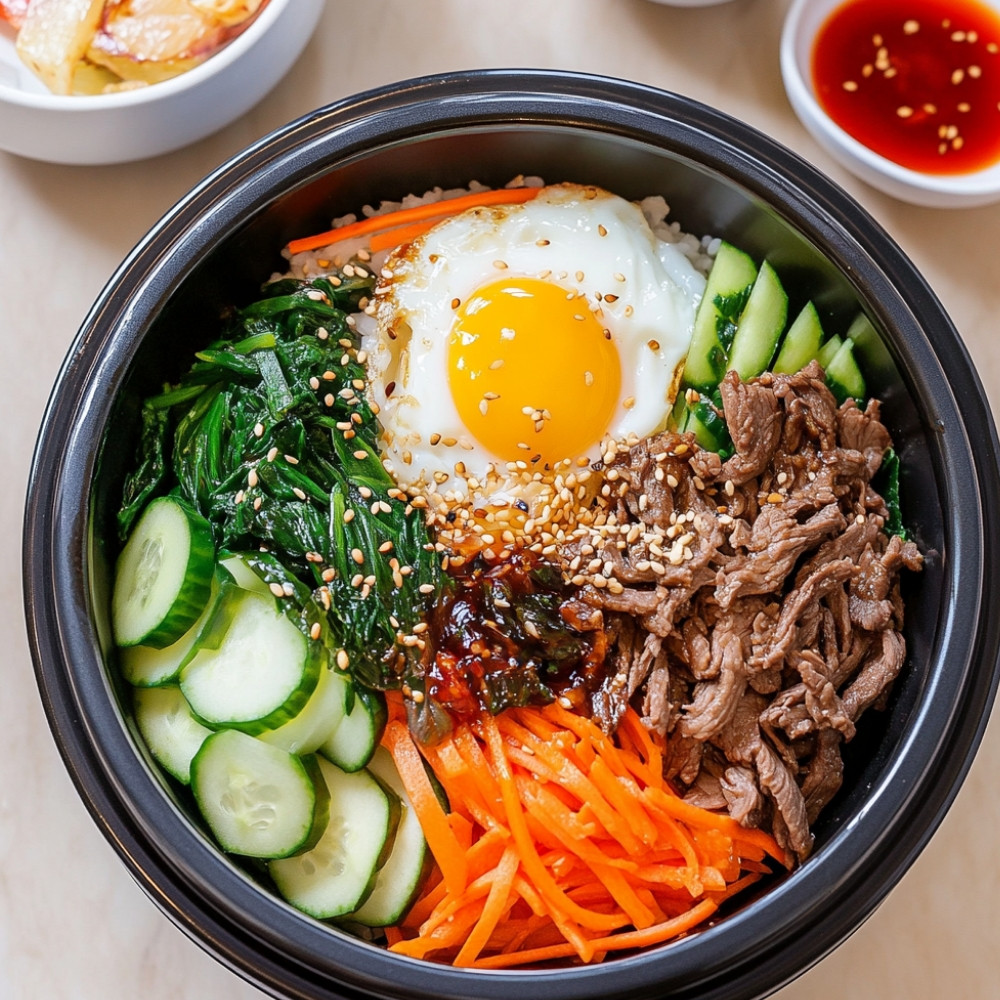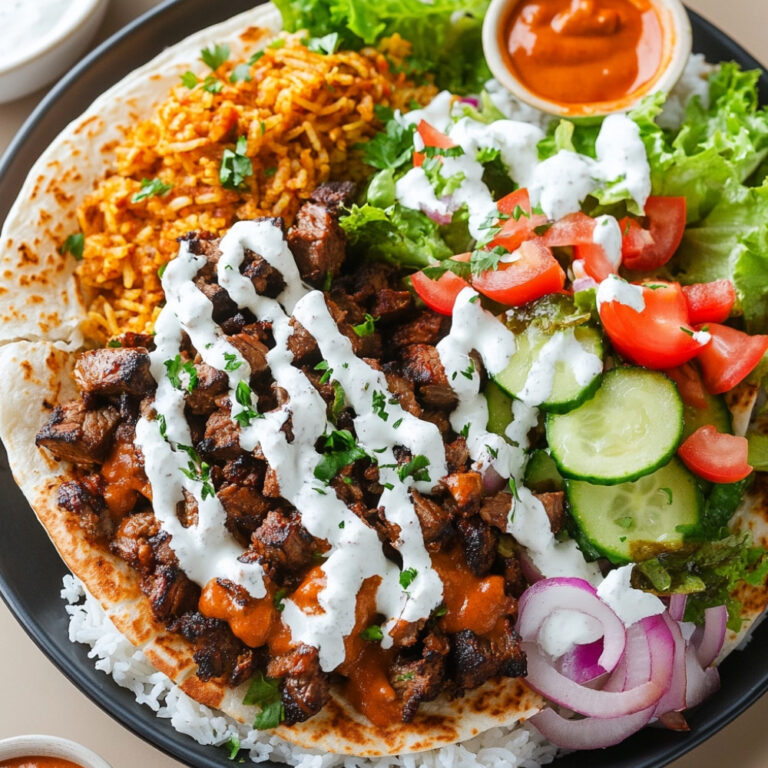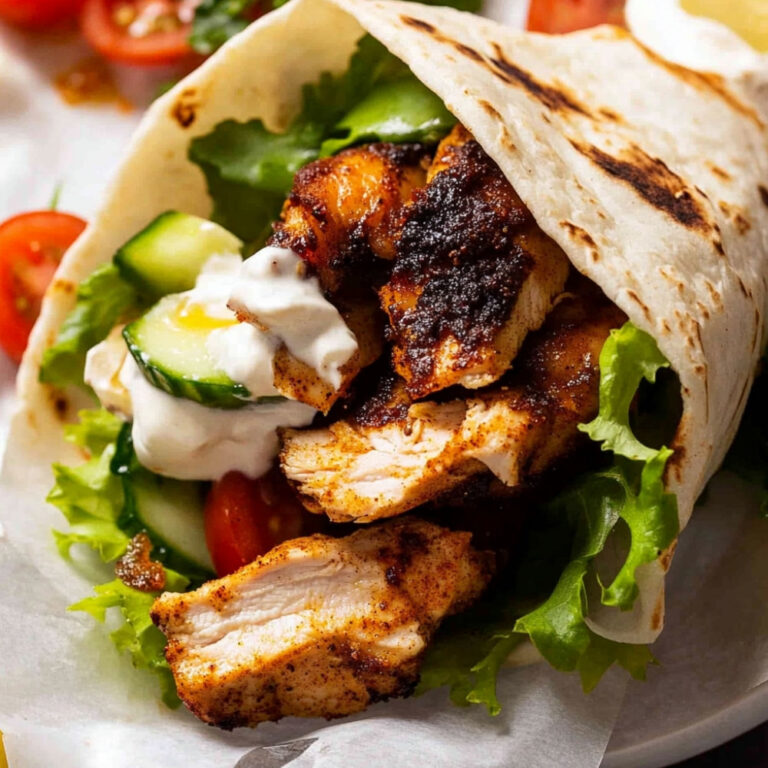Delicious Bibimbap: A Flavorful Korean Rice Bowl Recipe
Oh wow, let me tell you about bibimbap—it’s one of those dishes that just lights up your taste buds! Picture a big bowl filled with warm, fluffy rice topped with a colorful array of sautéed veggies, all crowned by a perfectly fried egg. And let’s not forget that spicy gochujang sauce that ties everything together. Every bite is a little adventure, bursting with flavor and texture. Seriously, it’s not just food; it’s a celebration on your plate… You’ve got the greens, the crunch, the warmth, all mingling together. It’s such a comforting dish, perfect for any day of the week!
Why You’ll Crave It
- It’s super customizable—add whatever veggies or protein you love!
- Perfect balance of flavors from spicy to savory, with that creamy egg on top.
- Visually stunning—I mean, who doesn’t love a colorful bowl of goodness?
- Great for meal prepping—make a bunch and enjoy it throughout the week!
My family always fights over the last bite… it gets intense!
What You’ll Need
- Cooked short-grain rice: You’ll need about 2 cups—the stickier, the better!
- Spinach: 1 cup, fresh and bright, totally adds a nice pop.
- Carrot: 1 medium, julienned for that lovely crunch.
- Zucchini: 1 medium, julienned too… more color, more fun!
- Shiitake mushrooms: 1 cup, sliced—that earthy flavor really rounds things out.
- Bean sprouts: 1 cup, adding that crisp freshness.
- Egg: 2, fried sunny-side up like a crown on top.
- Gochujang: 2 tablespoons of that fiery goodness.
- Sesame oil: 2 tablespoons, for that aromatic finish.
- Soy sauce: 1 tablespoon—because why not add more flavor?
- Sesame seeds: for garnish, just a sprinkle will do!
- Green onions: chopped, adding a fresh zing.
- Optional protein: 1 cup of your choice—beef, chicken, or tofu works beautifully!
Easy How-To
Getting the Rice Ready
Okay, so first things first—rinsing the rice! You’ll want to give it a good wash under cold water until, you know, the water looks clear. Then, you can cook it, following your rice cooker’s instructions or the stovetop method. If you go with the stovetop, just remember to let it steam, covered, for about 10 minutes after cooking. It really makes a difference in texture!
Veggie Time!
Next, it’s all about those veggies. So, slice up the carrots and zucchini into nice julienne strips. For the spinach, just a quick blanch in boiling water for a minute—then drain and rinse it under cold water. Seriously, make sure to squeeze out all that moisture so it doesn’t make your bibimbap soggy… and, of course, slice the mushrooms while you’re at it. Easy, right?
Cooking the Good Stuff
Now, grab a pan and heat a splash of oil over medium heat. Sauté each veggie separately—carrots, zucchini, and shiitake mushrooms—season them lightly with salt until they’re tender. This step really helps to keep the flavors distinct, so don’t rush it… Set them aside as you go so you can assemble later!
Eggcellent Egg
In that same pan, add just a tad more oil if needed and crack in your egg. Fry it sunny-side up, or scramble it if that’s your style. Whatever floats your boat; just keep it warm while you get everything else ready.
Assemble It All
Alright, time to put it all together! In a bowl, start with that lovely layer of rice at the bottom. Then, you can artfully arrange your colorful cooked veggies and the fried egg on top… Make it pretty! It’s part of the experience… Oh, and don’t forget those glorious toppings!
Final Touches
Drizzle sesame oil all over, and add your gochujang to taste. Honestly, I’m a huge fan of a little kick, so I tend to be generous. Sprinkle on sesame seeds and the chopped green onions to finish. And there you have it, a beautiful dish ready to mix and enjoy!
Good to Know
- For an authentic touch, stick to short-grain rice; trust me, it makes a difference!
- You can totally mix and match veggies—zucchini, bean sprouts, radishes… whatever you fancy!
- If spice isn’t your thing, reduce the gochujang; go with less if you’re serving guests who may not like it hot.
Serving Ideas
- Traditionally, you’d want to serve this with a side of kimchi… add some tang and crunch!
Top Tricks
- Make sure to cut your veggies evenly, it really makes everything cook nicely and look great!
Frequently Asked Questions
What type of rice is best for bibimbap?
Short-grain rice is the way to go! Its sticky texture helps hold everything together nicely.
Can I use other vegetables?
Absolutely! It’s super flexible; toss in whatever seasonal vegetables you have on hand and enjoy!
Is bibimbap vegan-friendly?
For sure! Just skip the meat and egg, and load it up with more veggies or some tofu. Bam, vegan bibimbap!
How do I store leftover bibimbap?
Store the components separately in airtight containers in the fridge if you want to enjoy it later. It keeps for a couple of days.
Can I make bibimbap in advance?
You can prep most of the ingredients ahead of time, but I’d say wait to assemble until just before serving for the best freshness!
Conclusion
Bibimbap is this wonderful, versatile dish that truly reflects your creativity in the kitchen. You can stick to traditional ingredients or completely modernize it; every bowl can be a little masterpiece of flavors and colors. Sharing a bowl of bibimbap is more than just a meal… it’s a beautiful experience, especially when you’re mixing it all together right before eating. Enjoy every moment—and every bite—as you embrace this beautiful culinary adventure!







